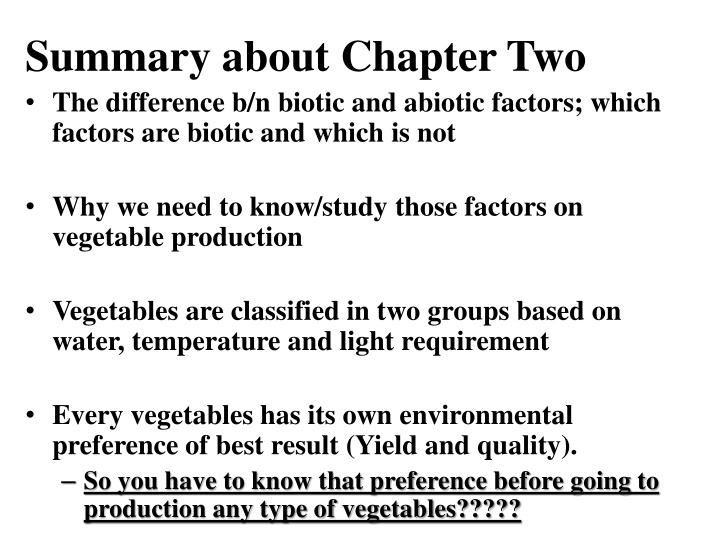George Washington Carver: Scientist and Educator
George Washington Carver, born on July 12, 1864, was a renowned scientist and educator who made significant contributions to agriculture and farming. He focused on improving soil quality and promoted alternative crops like peanuts and sweet potatoes to benefit farmers. Despite developing various peanut products, none achieved commercial success. Carver's legacy includes his dedication to advancing agricultural practices and enhancing the lives of rural communities.
Download Presentation

Please find below an Image/Link to download the presentation.
The content on the website is provided AS IS for your information and personal use only. It may not be sold, licensed, or shared on other websites without obtaining consent from the author.If you encounter any issues during the download, it is possible that the publisher has removed the file from their server.
You are allowed to download the files provided on this website for personal or commercial use, subject to the condition that they are used lawfully. All files are the property of their respective owners.
The content on the website is provided AS IS for your information and personal use only. It may not be sold, licensed, or shared on other websites without obtaining consent from the author.
E N D
Presentation Transcript
Summary about Chapter Two The difference b/n biotic and abiotic factors; which factors are biotic and which is not Why we need to know/study those factors on vegetable production Vegetables are classified in two groups based on water, temperature and light requirement Every vegetables has its own environmental preference of best result (Yield and quality). So you have to know that preference before going to production any type of vegetables?????
Vegetable production can be vary according to the individual personnel performance We do you have an interest? To produce vegetable .in your future life? If ok-----Good luck .. To give a maximum advice to our farms and other producers
Group discussion for 5 minutes The next chapter is about calcification of vegetables. Why we need to classify plants (its importance)?
Chapter 3. Classification of Vegetables Chapter Objectives At the end of the chapter, you should be able to: Describe different types of vegetable classification List the advantages & disadvantages of each type of classification
Answer the following Questions 1. Define the term Classification? is putting objects into groups 2. Importance of classifying plants? Enhances our understanding about other species and provides a method for cataloging this information Has practical value (what's edible, poisonous, medicinal)- useful to develop economic resources. Some time and helps to know what cultural practice, environment etc a crop required for better understanding of the relationship b/n them. In order to satisfy the need for cultivating, breeding & utilizing vegetable. Etc
Introduction It is estimated that there are at least 10,000 plant species used as vegetables worldwide; But; only about less than 50 are of great commercial value. B/c of the existence of a large number of d/t vegetables; It is often useful to classify vegetable- into groups for better understanding of the relationship between them.
In order to satisfy the need for Cultivating, Breeding & Utilizing vegetables, We must classify them under the guidance of Botanical, Ecology, Growth habit and So on. Thus, the following are main classification systems of vegetable crops
3.1. Botanical Classification This classification is based on botanical/biological affiliation/ relationship of the crops & similarity in morphological structures. Plants are divided into four great groups Thallophyta (lichens, algae & fungi), Brophyta (mosses & liverworts), Pteridophyta (ferns & other allies) & Spertmatophyta (the seed plants).
The vegetables belongs to the spermatophyte. This group or sub-community is sub group into two divisions: Division I. Gymnosperms (ovules naked, not enclosed in an ovary) & No vegetables belong in the division gymnosperms Division II. Andiosperms (ovules in a carpel or ovary). This division classified into two classes:- class I & II Class I. Monocotyledons (one seed leaf) and Class II. Dicotyledon (two seed leaves).. Vegetables are found in in Angiosperms class.
Classes are further divided into families (with names that end in aceae) which are composed of individual related plant species. It show the families represented of crops, as well as the important vegetables crops belonging to each. For practical purpose, a vegetable is classified starting from the family group.
The successive grouping of plants in the botanical classification (from broadest grouping to most specific) are Kingdom, Division, Subdivision, Phylum, Subphylum, Class, Subclass, Order, Family, . genus and . species.
The combination of genus and species make up the scientific name of vegetables which is Accepted worldwide & there cannot be any confusion as per their nomenclature eg, in family solanaceae, we found potato, tomato, eggplant and pepper The advantage of this classification is- It gives a very clear differences & relationship of different vegetables That is the most exact system/scientific way of classifications; this system is very useful to breeders and vegetable researchers.
The disadvantage; It is of little value in giving principles of culture; since crops with in a family may vary widely in their requirements. Therefore, it doesn t completely satisfy the needs of producer eg. Potatoes and tomatoes belong to the same family (solanaceae), but their cultural requirements are very different. However, other crops in this family, as tomatoes, eggplant, and pepper have similar cultural requirements. Likewise most crops in the cucurbitaceae have similar cultural requirements.
Table. The botanical classification of some common vegetables Division Anthophyta Class monocotyledons Alliaceae Allium ampeloprasum L. -leek Allium cepa L.Aggretatum group, multiplier onion (shallot) Allium cepa L. Cepa group- Onion Allium sativum L. Garlic Dioscoreaceae eg. Dioscorea alata L. Yam Liliaceae Asparagus officinalis L.Asparagus Class Dicotyledon Apiaceae Daucus carota L.- Carrot Petroselium crispum (Mill) Nym. Var Crispum- Parsley Asteraceae Loctuca sativa L. Var. Capitata L-lettuce head or butter-head Loctuca sativa L. Var. longifolia Lam.- leaf or Romaine lettuce Brassicaceae Brassica oleracea L. Var botrytis L. Cauliflower Brassica oleracea L. Var Capitata L. Cabbage Brassica pervirids Bailey- Spinach Raphanus sativus L. - radish Convolvulaceae eg. Ipormea batatus (L) Lam- Sweet Potato
3.2. Classification Based on Hardiness This classification is based on the ability of crop plants to tolerate frost. It classified as hardy and tender plants. Hardy vegetables- Endure/tolerate ordinary frosts without injury. These are essentially winter season/cool season/ temperate crops & are adapted to mean monthly T C of 15-18 C eg. Asparagus & rhubarb can tolerate even freezing T C.
These crops can further be divided into two sub- groups: Hardy or tolerant vegetables- May safely be planted before the date of the last killing frost in spring. Semi-hardy or semi-tolerant vegetables- Not withstand a hard frost but will grow in cool weather & are not injured by a light frost.
Tender/non hardy/summer season crops Are crops killed by frost (intolerant to frost). eg. cucurbits thrive best under high T C (20-27 C). It classified as: Tender or sensitive vegetables (injured or even killed by a light frost but can withstand cool weather & a cold soil) and Very tender or very sensitive vegetables (injured by cool weather).
Therefore; frost injury is the chief difference b/n hardy &tender plants. Hardy plants Will not thrive well under hot dry conditions While tender Can thrive during the hot weather. The terms cool-season crops and warm-season crops stand to mean hardy plants, and tender plants respectively.
Warm-season vegetables Are subtropical/tropical vegetables that need relatively high T C, hot & dry conditions eg. cucumber, eggplant, spinach, muskmelons, okra, paper, snap bean, squash & pumpkin, sweet corn, sweet potato, tomato & watermelon Usually these crops that are grown for and bear edible fruit with few exceptions such as sweet potatoes & spinach with leaf and stem edible parts Are adapted to mean monthly T C of 18oC to 29oC and are intolerant to frost.
Cool- season or Temperate vegetables They withstand light frost & adapted to mean monthly T C of 15oC to 18oC. It require temperate or extreme winter to be able to flower and produce seeds. It include most root crops & crops for salads & greens eg, artichoke, carrot, parsley, asparagus, Brussels sprouts, broccoli, cabbage, leak, celery, cauliflower, garlic, kale, onion, pea, radish, celery, Swiss chard, lettuce, potato, shallot etc Mostly the part of plant used for consumption in cool crops is vegetative parts: root, stems, leaves and buds or immature flower with few exceptions fruit eg, Pea and bean.
Many cool season crops are Shallow rooted (irrigated more frequently than warm) and Small in size than warm crops. A few are moderately deep rooted. Cool season crops respond to nitrogen fertilizers than warm crops because nitrification occurs slowly in cool soils. Seeds germinate at cooler soil temperature and Some of the biennials are susceptible to pre-mature seed stalk development from exposure to prolonged cool weather. They are stored at close to 00C, except the white potatoes.
Knowing these classifications can be useful in producing & managing crops. This system of classification is of used to know time of planting. Eg. by grouping all hardy plants together general principles regarding time of planting can be given for the whole group. However, it does not fulfill the interest of the olericulturist b/c it lists those crops with d/t cultural requirements together eg. sweet potato & tomato.
3.3. Classification based life cycle Vegetables can be classified according to the time required to complete their life cycle. Based on this it is classified as: Annual vegetables: Most of the common vegetables are annuals. It complete their life cycles (seed to seed or from germinate to die) in a single year/growing season. Eg. tomato, eggplant, pepper, cucumber, watermelon, pumpkin, soybean, spinach, lettuce and beans.
Biennial vegetables: They are biennials but are grown as annuals. It complete their life cycles in two growing seasons/years. It produce the vegetative parts in first season & reproductive parts in second season after they passed the vernalization & then die. Biennial vegetables can t complete their life cycle in the absence of low T C. Eg. Chinese cabbage, cabbage, mustard, radish, carrot, turnip, parsley, onion, beet root, broccoli, cauliflower, lettuce
Perennial vegetables: It will give many years of harvests because these vegetables life cycle will last for many years (grow for more than two years). Eg. Asparagus, bamboo shoot, globe artichoke, strawberry etc. In cropping practice, some vegetables have uncertain life cycles eg. Tomato & eggplant which are annual vegetables, are planted in greenhouse they can become perennial plants. Some places in Ethiopia are natural greenhouse that can grow well for many years.
3.4. Classification Based on Edible Portion/Parts This classification is important from the consumer and post-harvest handling point of view. For example, leafy vegetables are highly perishable and cannot be stored for longer periods. On the other hand tubers and bulbs can be stored at room T C for a considerable period without losing quality
Edible organ classification system is very useful in planting vegetable in accordance with The need of markets and vegetable processing. At the same times, different vegetables in the same group often have the similar demands and culture techniques.
On the basis of edible plant part; Vegetables can be classified into the following groups; A. Root vegetables- The main edible organ is root and it can divided into two : Enlarged Tap root vegetables like radish, carrot, turnip, beet root, etc. and Enlarged lateral Tuber-root vegetables, like sweet potato.
B. Stem vegetables- The main edible organ is stem. They can be divided into:- Underground stem vegetables: starchy including underground tube-stem vegetables such as potato; underground corm vegetables such as taro; and Rooty tube-stem vegetables such ginger. Aerial stem vegetables: non starchy including tender stem vegetables such as asparagus, bamboo shoot; & fleshy stem vegetables such as asparagus lettuce, kohlrabi, etc.
C. Flower/immature flower bud vegetables- They are among the most nutritious vegetables, such as cauliflower, broccoli and artichoke, etc. D. Leaf vegetables- three groups Common leaf vegetables, e.g. Spinach, non-heading Chinese cabbage, lettuce, celery, edible amaranth, foliage beet, etc. Heading leaf vegetables, e.g. Chinese cabbage, cabbage, heading lettuce, etc. Bulb & flavoring leaf vegetables e.g. Onion, garlic & lily etc. are bulb vegetables (leaf base stem vegetable); leek, Chinese leek, coriander, etc. are flavoring vegetables
E. Fruit vegetables- three types of fruit vegetables: Melons: eg, cucumber, pumpkin, watermelon, wax gourd, luffa (sponge gourd), bitter & bottle gourd, etc. Berries: Such as tomato, pepper, eggplant, etc. Beans: eg. soybean, broad bean, cowpea, vegetable pea etc. Also can be classified as Immature (pea, Snap bean, lima bean, summer squash, cucumber, okra, Sweet corn, eggplant) and Mature fruit vegetables 1. Cucurbits (pumpkin and winter squash, squash muskmelon, watermelon) 2. Solanum crops (tomato, pepper)
3.5. Classification According to Photoperiod Flowering & fruiting of certain crop species are affected by photoperiod. Some will flower as the day length decrease & others will flower as it increases. Bulbing & tuberization are also are affected by photoperiod.
The vegetable crops can be classified into three according to their response to photoperiod: Short- day (It requires short day), Long-day (requires long day) & Day-neutral vegetable (independent of daily duration of light)
Table. Classification of vegetables according to photoperiod Crop species according to photoperiod response the photoperiod Short day plants African eggplant Flowering Sweet potato Flowering & tuber production potato Tuber production Onion (some Cultivars) Seed & bulb formation Cassava Tuber formation Long day plants Beet root Flowering Carrot Flowering Chinese cabbage Flowering Spinach Flowering Lettuce Flowering Onion (some cultivars) Bulb formation Radish Flowering Potato Flowering Day neutral plants Asparagus, cucumber, cauliflower, cabbage, sweet potato, French bean, melon, chili pepper, tomatoes, maize, pea Phase of development sensitive to Practical importance Seed and crop production Crop production Crop production Seed and crop production Crop production Seed production Seed production Seed production Seed production Seed production Crop production Seed production Seed production
3.6. Classification Based on the Method of Culture It is a very convenient method of classification because it is based on the essential methods of culture. In this system all those crops that require similar cultural practice are grouped together in one group for discussion. This makes it possible to give the general cultural/ cultivation practices based on their culture for the group without the necessity of repetition in the discussion of individual crops. Or It has been proved to be the best adaptable in field situations. It is easy to generalize the cultivation practices based on their culture and climatic requirements.
The common vegetable classes as per their cultivation practices (in general principles of vegetable growing) are as follow: Solanaceous fruits:-Vegetables in this family include tomatoes, peppers, eggplants etc. In each case seed is sown in the nursery bed to raise seedlings for transplanting. Cole crops:-are crops that belong to the cabbage or Brassicaceae family. They are indigenous to temperate and cold climates. Vegetables included in this family are cabbage, broccoli, cauliflower, and Brussels sprouts. Pot herbs and Greens:- Leafy crops that are usually eaten after they have been cooked. Crops in this grouping come from the chenopodiaceae (e.g. Spinach) and Brassicaceae (e.g. Collards and kale) families, chard
Salad crops:-Crops used mainly for their leaves & eaten raw. Major vegetables in this group come from the Asteraceae (e.g. Lettuce) & Apiaceae (e.g. Celery & parsley) families. Perennial crops: Plants in this grouping include members from the Lilliaceae (e.g. asparagus,) Asteraceae (e.g. globe artichoke) and Polygonaceae (e.g. rhubarb) families. Root crops: - Major Root crops come from the Apiaceae (e.g. carrots), Chenopodiaceae (e.g. beets root), Brassicaceae (e.g. turnip and rutabaga). Bulb crops: -All are species of Allium and members of Alliaceae family. It include onion, garlic, shallot and leeks.
Legumes or pulse crops: -All are members of the Fabaceae or pea family. It include common bean, pea. Cucurbits:- are members of the Cucurbitaceae or gourd family. Plants in this family have tendrils, leaves that are often rough to the touch and large fleshy fruits with many seeds. It include watermelon, muskmelon and other melons, cucumbers, pumpkin, and the squashes. Yam, Cassava and Anchote vegetables Etc This system combines parts of the other three methods (Botanical, hardiness & consumable parts).
3.7. Based on Root Depth Shallow rooted: eg. Cole, cabbage, cauliflower, radish, onion, celery, spinach, garlic, onion, carrot, potato, sweet corn etc. Medium rooted: Such as cucumber, melon, eggplant, pea, pumpkin, mustard etc. and Deep rooted: Such as watermelon, tomato, squash etc.
3.8. Based on Nutritional Value Vitamin rich vegetables eg. Eg. pepper, tomato, carrot etc.. Mineral rich vegetables eg. Such as garlic, celery etc.. Carbohydrate rich vegetables eg. Such as potato, sweet potato etc.. Protein rich vegetables: Such as legume vegetables 3.9. Etc























